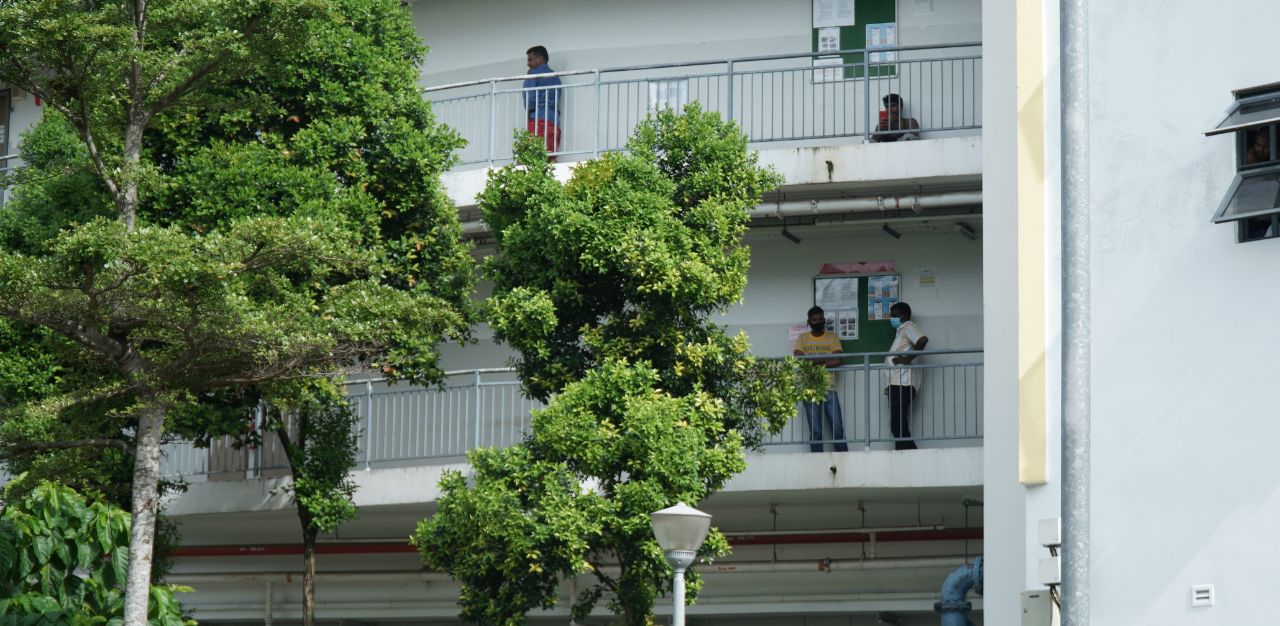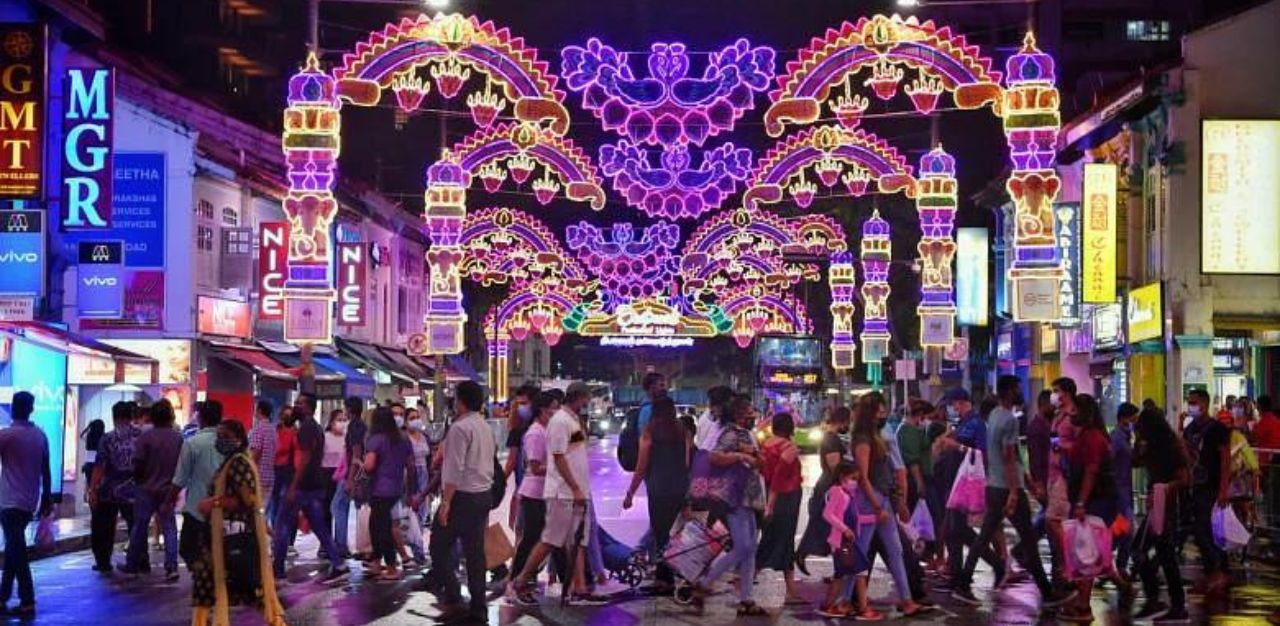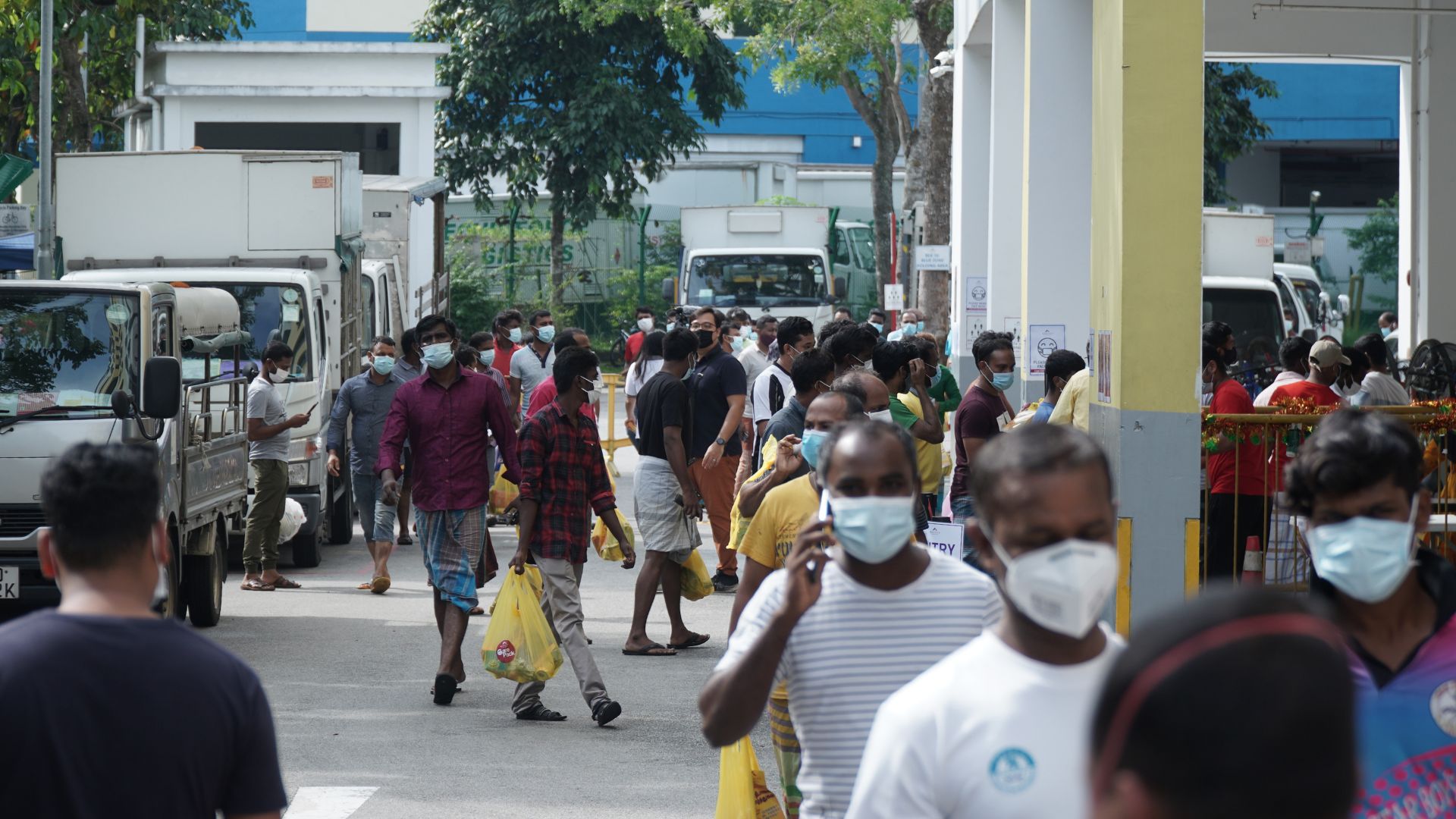Migrant workers no longer need exit passes from 24 June to visit community areas but there is no cause for celebration just yet.
In a recent report, the Ministry of Health (MOH) has eased restrictions on movement restrictions for migrant workers living in dormitories, but these migrant workers still need to apply for visit passes should they wish to go down to four popular locations in Singapore – Little India, Jurong East, Geylang Serai, and Chinatown – on Sundays and public holidays.
The move, says MOH, is “a new mechanism to manage the high footfall” at these popular places.
This has created some sort of segregation among the different communities in Singapore and rightly pointed out by @walidj.adullah and reposted by alternative news source Wake Up, Singapore WUS, “The world has already moved on with Covid. But even if we have not, one rule for us, one rule for our migrant worker friends?”
So the question lingers: In today’s endemic Singapore, why are the movements of migrant workers living in dormitories still restricted?
The road to recovery has several forks
On 26 April, the Multi-Ministry Taskforce announced an adjustment of the DORSCON level from orange to yellow, lifting the limits for group sizes, household visitors, venue capacities to ease the community Safe Management Measures, much to the delight of Singaporeans.
But for migrant workers, the easing of restrictions followed at a much slower pace.

It was only as recently as 27 April that 25,000 exit passes were issued for weekdays and 50,000 for weekends and public holidays, for migrant workers to travel to locations outside their dormitories. This number of exit passes accounts for about 15 per cent of the 323,000 dormitory dwellers in Singapore.
The revoking of the exit pass requirement from 24 June seems a step in the right direction to ensure that migrant workers transition to an endemic society. Yet, despite a 98 per cent vaccination rate for migrant workers living in dormitories, there seems to be a need for them to apply for visit passes to four popular spots.
Vice-President of non-profit organisation Transient Workers Count Too (TWC2) Alex Au, believes the regulations concerning movement restrictions should be “applied equally to Singaporeans and migrant workers alike”.
Mr Au, who feels that the ruling should have been implemented much earlier, says it is now “absolutely discriminatory towards migrant workers”. After all, migrant workers go to these areas to buy necessities and to remit money to their home countries.
“We like to visit Little India to buy groceries as the goods there tend to be cheaper than what is available at the stores in dormitories,” says Mr Ravi Karuppiah, a migrant workplace safety and health coordinator, whose workers live in a dormitory in Choa Chu Kang.
“There is no rational reason that since the middle of 2021 when the vaccination rate amongst migrant workers living in dormitories was higher than the Singaporean population, to restrict their movements from dormitories. Just as Singaporeans are free to move wherever they want whenever they want, the same should be true for migrant workers. There is no justification for this,” Mr Au says. TWC2 is dedicated to improving conditions for low-wage migrant workers.
A tale of four groupings?
According to the new update, a total of 80,000 passes will be made available each Sunday or public holiday, with an allocation of 30,000 passes for Little India, 20,000 for Jurong East, and 15,000 each for Geylang Serai and Chinatown.
This mechanism, says MOH, seeks to manage crowding at the four locations with high footfall.
“Before Covid, places like Little India and Chinatown were important for social gatherings for migrant workers. Even though we are able to remit money at our dormitories, Little India is a special place for our community,” says Mr Ravi.

“Singaporeans should be fully aware that foreign communities need a social centre where they can feel comfortable. Even though recreational centres and dormitories offer services for migrant workers, we’ve learnt from speaking to them that these places tend to overcharge for services as they perceive a sense of monopoly within these facilities. It disadvantages the workers in very real financial terms. To restrict them to one service provider is to impose a penalty on migrant workers for no reason,” says Mr Au.
Bearing the brunt of double standards
Perhaps at its core, there are double standards in the formation and application of such policies to restrict the movement of foreign workers.
Mr Au says not all migrant workers are the same.
“There is a subcategory of workers who have lost their jobs. They are known as special pass holders as their work permits have been cancelled. Unfortunately, during the past months when the exit passes were issued to visit various community areas, these special pass holders were excluded from these quotas, and they remained confined in their dormitories. When the government makes sweeping pronouncements, are they going to be equally applied to such subcategories of workers? Or are they going to be ‘unofficially’ discriminated against?” he asks.
“Such rulings are applied in a patchy and inconsistent way that continues to victimise people away from the limelight. What I’ve observed from such rulings is that it seems to have been condoned by lawmakers,” Mr Au adds.
It remains to be seen how these visit passes will be enforced and if there will be demarcations to where the four locations start or end.
Join the conversations on TheHomeGround Asia’s Facebook and Instagram, and get the latest updates via Telegram.




























